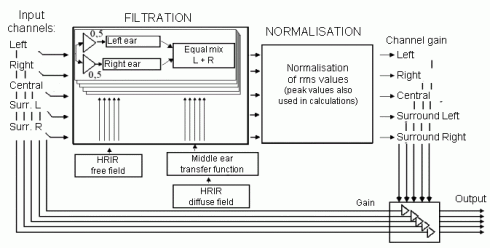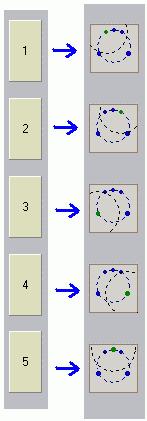Multitask Noisy Speech Enhancement System
www.denoise.net
Example
Restorer
- Speech band equalizer
- Dynamics processing
- Noise gate
- Signal level limiter
- Clipping restoration
- Noise reduction
- Noise whitening
- Blind deconvolution
- Spectrum analyser
- Time stretching
- Spectral expander
- Fourier corrector
- Neural network corrector
- Decorrelation
- Joint approximation
- Homomorphic approximation
- Reverberation
Recorder
Browser
- Synchronisation
- Normalisation
Contact info
Normalisation
When the multiple recordings of the speech signal are used in the multichannel playback in the Browser application, all of these signals should have equal loudness. The normalisation module was designed for this task.
A root-mean-square (rms) value of the signal is used as an estimate of its loudness. The normalisation algorithm processes all signals so that their rms value of each signal is the same. Before the rms value is determined, signals are filtered in order to take into account factors such as sound source position relative to the listener and spatial sound filtration by the listener's body. Head related impulse responses (HRIR), recorded in the anechoic chamber using the microphones placed in the ears of the mannequin, are used in the filtration.
Two sets of HRIR functions, related to the speakers placement corcondant with the ITU-R standard, are used in the algorithm: free field HRIR (by Keith and Gardner) and diffuse field HRIR. In the diffuse field method, HRIR functions are normalised to the average of all functions (or to one of the functions). The normalisation process eliminates the influence of the recording devices on the recorded HRIR functions (i.e. difference between the frequency responses of the microphones inside the mannequin and the reference microphone used to determine the frequency response of the test loudspeaker). The normalisation procedure also eliminates the filtering effect of the ear. Therefore, the recorded diffuse field HRIRs are additionally filtered with the transfer function of the outer and middle human ear.
Monophonic sound signals are filtered using the selected HRIR functions (separate HRIR function for left and right ear). After the filtering, rms values are calculated for each signal. Next, for each signal, the gain needed to obtain equal rms value is determined. The obtained gain values are corrected in order to prevent signal clipping. Finally, all signals are processed according to the calculated gain levels.

 The normalisation procedure is started when the user selects the appropriate option from the Browser application menu. No parameters need to be adjusted by the user. The algorithm automatically normalises all the sound files currently open in the application. If the multichannel system is used, the position of the virtual sound source and the range of each source have to be set for each surround channel. Each channel is filtered using the appropriate HRIR function.
The normalisation procedure is started when the user selects the appropriate option from the Browser application menu. No parameters need to be adjusted by the user. The algorithm automatically normalises all the sound files currently open in the application. If the multichannel system is used, the position of the virtual sound source and the range of each source have to be set for each surround channel. Each channel is filtered using the appropriate HRIR function.